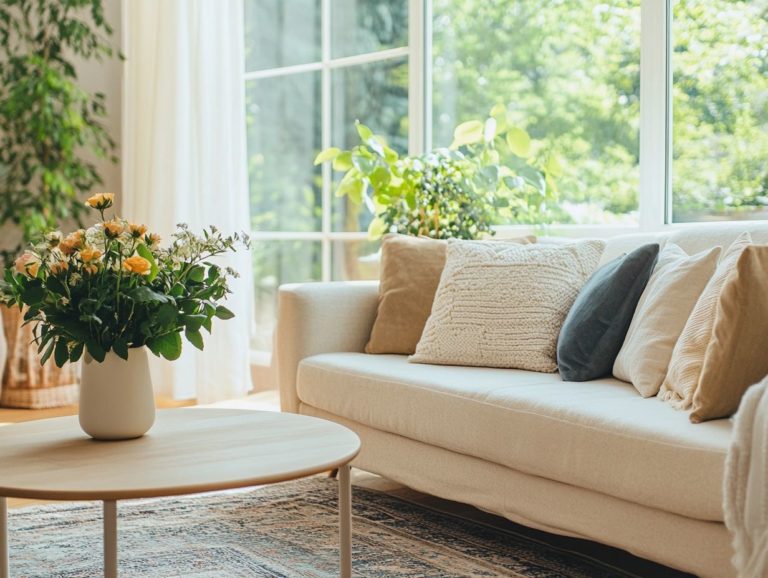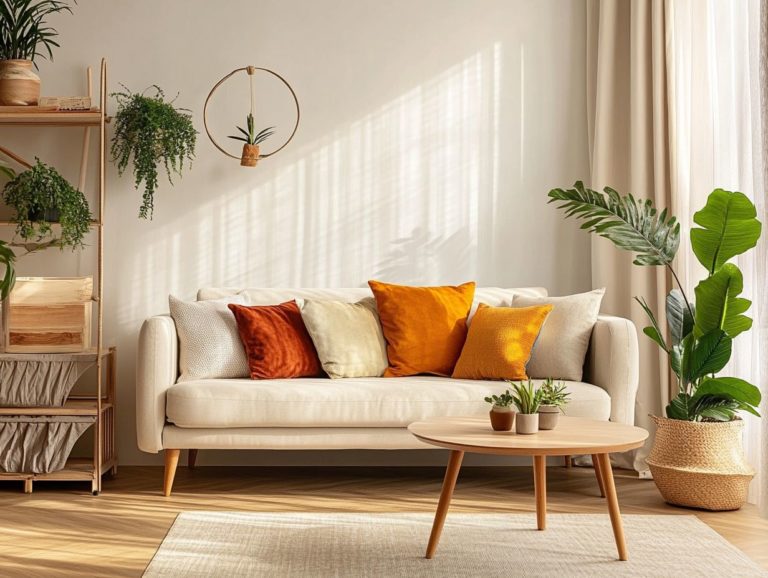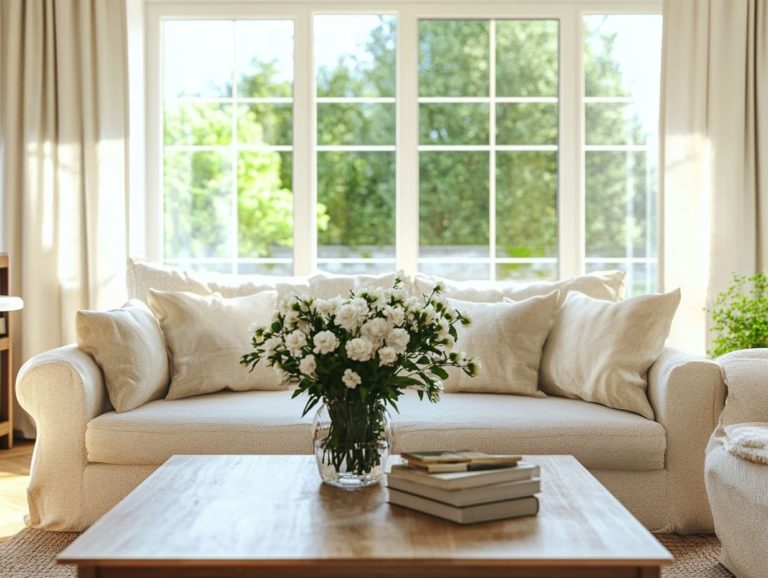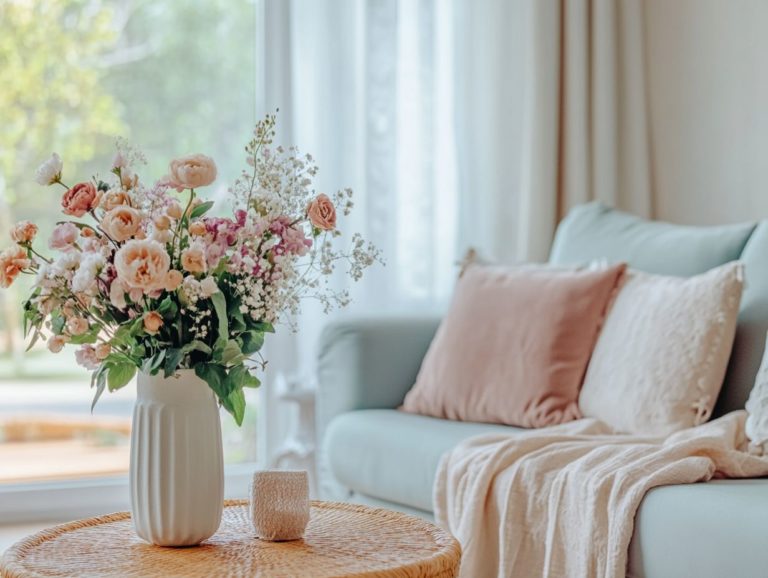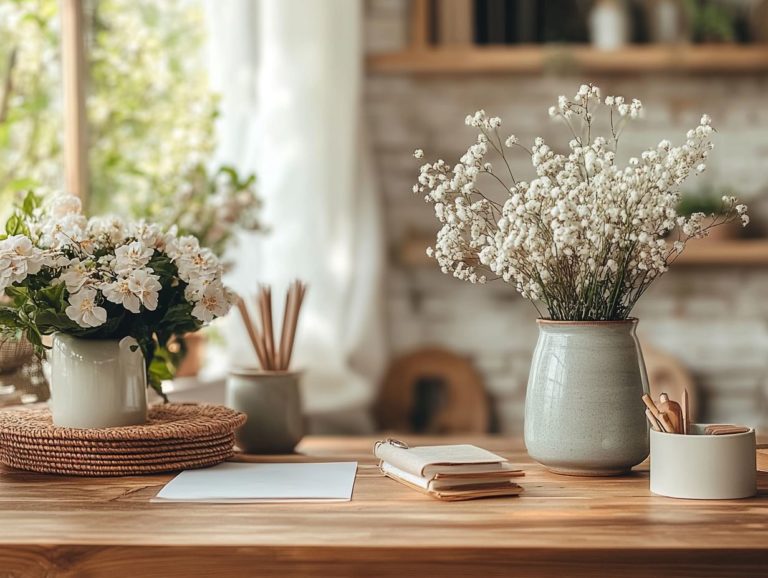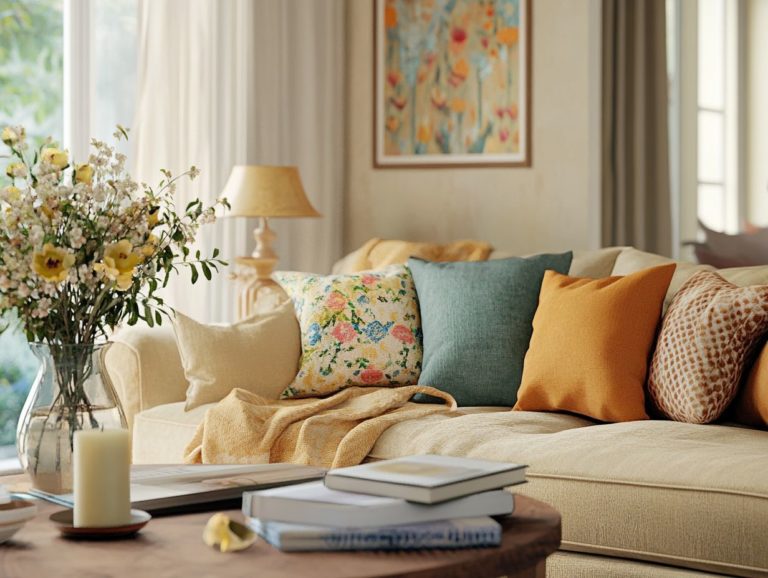Staging Your Home: Inside vs. Outside
Staging your home can truly transform your selling experience. It significantly increases your chances of attracting buyers and closing that sale.
This article delves into the crucial role of staging. It outlines the key reasons why dedicating time and effort before listing your property is a wise investment.
From indoor strategies that maximize space and create an inviting atmosphere to outdoor enhancements that boost curb appeal, this guide leads you seamlessly through the process.
It also covers common pitfalls to avoid, ensuring your home shines in the spotlight for all the right reasons.
Contents
- Key Takeaways:
- The Importance of Staging Your Home
- Indoor Staging Tips
- Outdoor Staging Tips
- Combining Indoor and Outdoor Staging
- Common Staging Mistakes to Avoid
- Frequently Asked Questions
- What is the purpose of staging a home?
- Is it important to stage both the inside and outside of a home?
- What are some tips for staging the inside of a home?
- How can I stage the outside of my home?
- Do I need to hire a professional to stage my home?
- When is the best time to stage a home?
- Ready to Stage Your Home?
Key Takeaways:
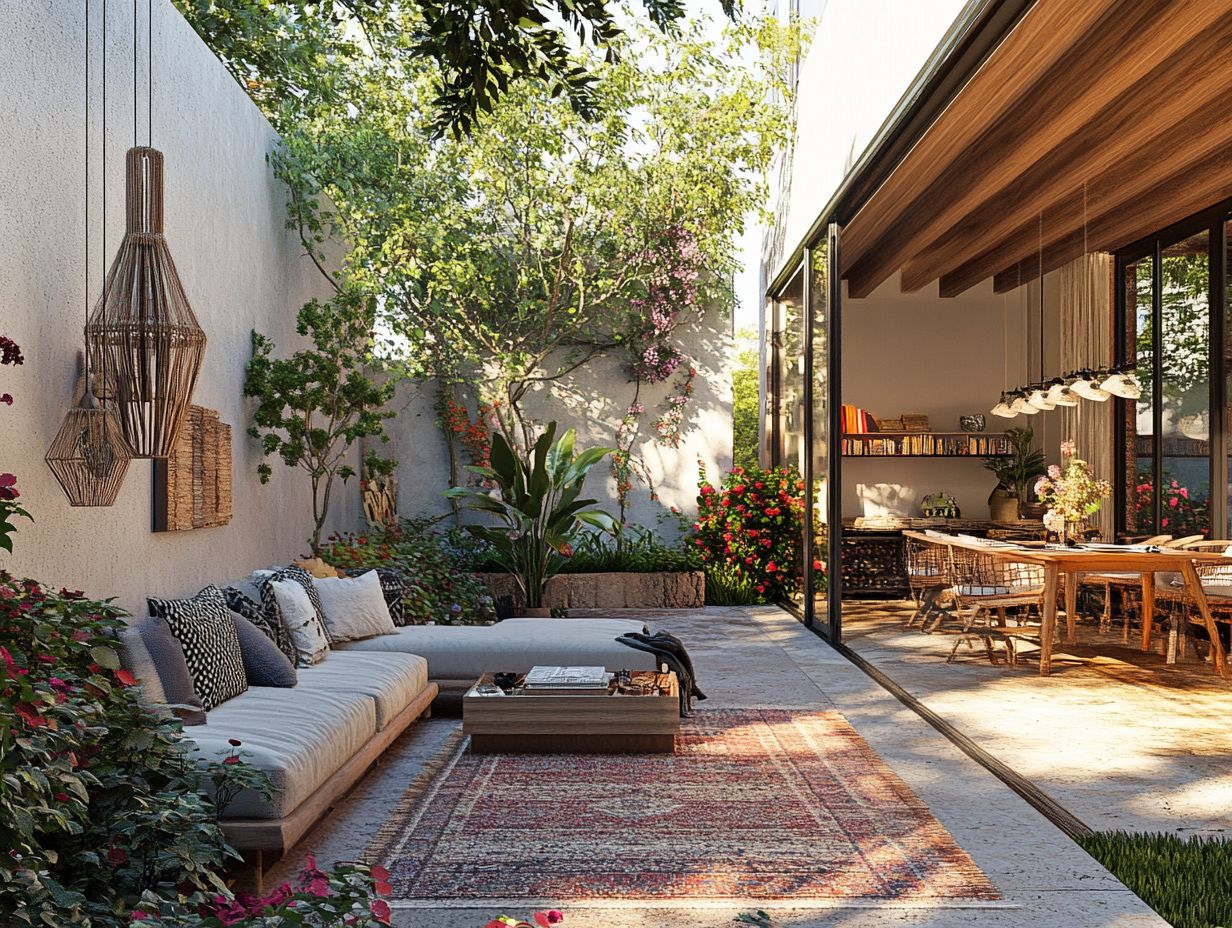
Staging raises your home s appeal and sale value.
Create an inviting indoor atmosphere and enhance outdoor spaces for a great first impression.
The Importance of Staging Your Home
Staging your home is a crucial step in the selling process that profoundly impacts potential buyers’ impressions and decisions.
In 2023, real estate experts, such as those from BlueWest Properties in Fort Worth, Texas, underscore the significance of well-executed home staging. It can elevate curb appeal and highlight the property s finest features.
Staging shows off your home s best features while understanding what buyers want. It forges an emotional connection that truly resonates with them.
Reasons to Stage Before Selling
Staging your home before selling can boost the sale price and speed up the transaction. It captivates potential buyers in ways an empty space simply cannot.
According to the National Association of Realtors, well-staged homes can sell up to 73% faster than their non-staged counterparts. Buyers are instinctively attracted to spaces that feel inviting and functional.
Key staging strategies to consider include:
- Enhancing curb appeal with fresh landscaping
- Utilizing neutral color palettes to attract a broader audience
- Ensuring ample lighting to brighten every room
These efforts not only meet buyer expectations but also help create a vision in which they can imagine themselves living.
Indoor Staging Tips
Indoor staging is essential for highlighting the different spaces within a home—think living room, dining room, primary bedroom, and home office. Utilizing effective techniques can create an inviting atmosphere that captivates potential buyers, especially with tips for small spaces.
By effectively decluttering and strategically arranging furniture, you can curate a pristine ambiance that accentuates your property’s finest attributes.
Maximizing Space and Appeal
Maximizing space and appeal in home staging is essential. It profoundly influences how potential buyers perceive the size and functionality of each room.
Thoughtfully arranging your furniture can create a more spacious feel, highlighting your home s potential to accommodate various lifestyles.
It s vital to remove oversized and bulky pieces; doing so opens up pathways and minimizes clutter, resulting in a more airy environment.
Incorporating multi-functional furniture like a stylish ottoman that doubles as storage can make a room feel both practical and inviting. Arranging seating areas to promote conversation enhances the overall atmosphere, making it easier for buyers to picture themselves enjoying the space.
Don t wait to stage your home this can make all the difference!
Creating a Neutral and Inviting Atmosphere
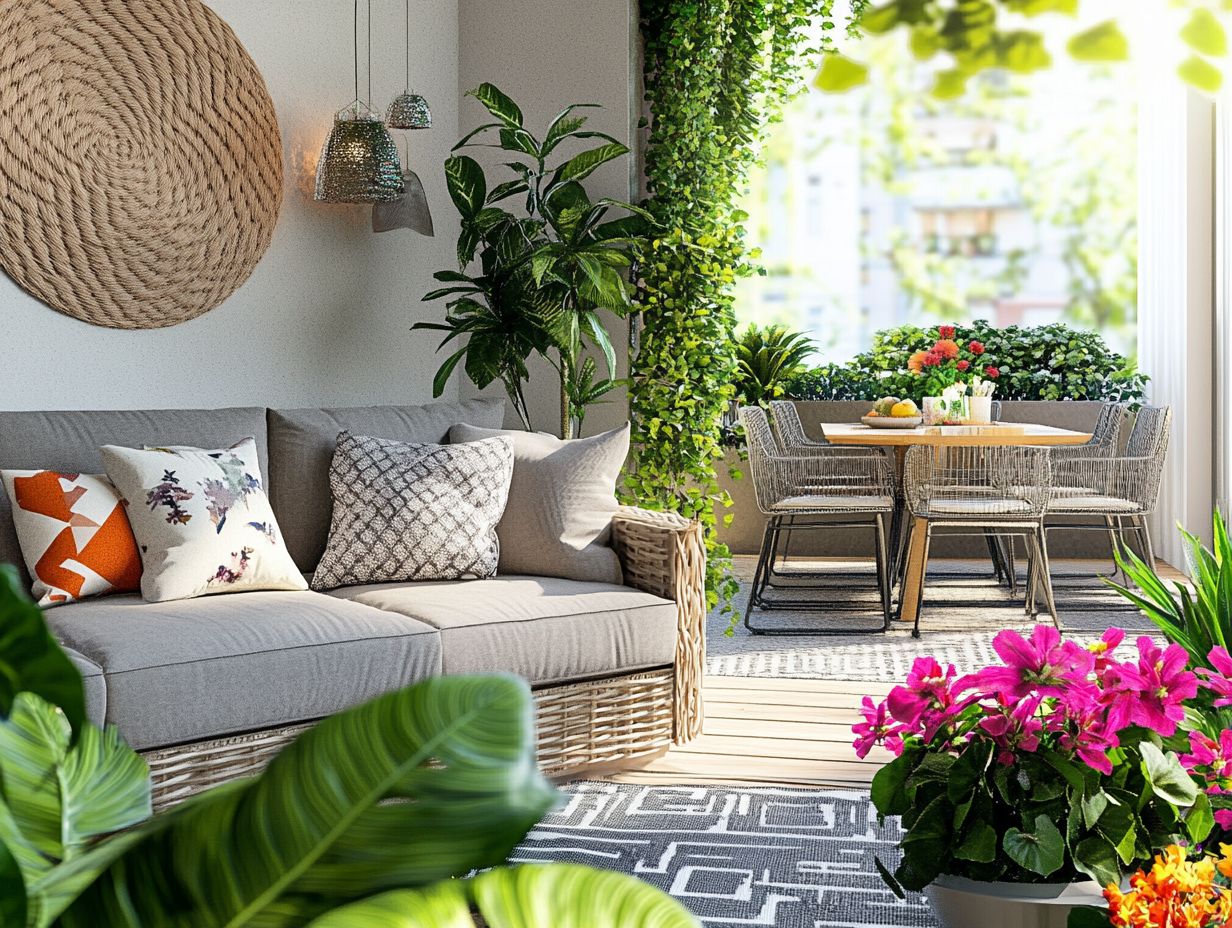
Creating a neutral and inviting atmosphere in your home is essential for effective staging. It allows potential buyers to envision their own lives within the space. By utilizing neutral colors and maintaining a clean environment, you create a friendly atmosphere that appeals to a broader audience.
A thoughtfully chosen color palette can significantly enhance your home s appeal, especially in key areas like the living room, kitchen, and bedrooms. Soft greys, warm beiges, and muted whites serve as excellent choices. These colors craft an adaptable backdrop that complements various styles.
For example, a light grey in the living room can evoke calmness while exuding sophistication. In the kitchen, warm beiges promote feelings of warmth and hospitality.
Consider staging the bedrooms with pale blues or soft greens. These colors inspire tranquility and restfulness. By intentionally selecting these neutral tones, you create an emotional connection. This invites buyers to imagine themselves relaxed and at home, cultivating a strong sense of belonging an essential element in the buying process.
Outdoor Staging Tips
Outdoor staging holds just as much weight as indoor staging when captivating potential buyers. To maximize your efforts, consider the do’s and don’ts of home staging, as it plays a crucial role in enhancing the overall attractiveness of your home from the street.
Imagine a beautifully staged outdoor living area adorned with fresh flowers and meticulously maintained landscaping. This sight crafts an inviting first impression, beckoning buyers to venture inside and discover more.
Enhancing Curb Appeal
Enhancing curb appeal is an essential part of home staging. It can greatly impact potential buyers’ first impressions. When you introduce elements like fresh flowers, well-kept lawns, and inviting entryways, you create an exterior that immediately draws buyers in.
By incorporating landscaping ideas, such as strategically placed shrubs or vibrant flower beds, you can effortlessly elevate the overall aesthetic of your home. A bold yet inviting color for the front door not only piques curiosity but also serves as a focal point that highlights your home s charm.
Keeping walkways clean and free of debris adds to a polished appearance that speaks volumes. These straightforward yet effective changes reflect the quality of the interior spaces. They suggest that the care you ve taken on the outside translates into a welcoming atmosphere inside.
A beautifully presented entrance does more than just catch the eye. It invites potential buyers to explore further, making them envision their future in your home.
Making the Most of Your Outdoor Space
Maximizing your outdoor space can significantly enhance your home’s appeal during the selling process. Many buyers are drawn to outdoor living areas. By utilizing home staging tips that work, you can transform your patios and gardens into inviting retreats that extend the livability of your home.
By thoughtfully arranging your furniture, incorporating decorative elements, and addressing practical uses, you can craft environments that resonate with potential buyers.
For instance, creating a cozy seating area with weather-resistant sofas and an elegant coffee table invites relaxation and conversation. Adding vibrant planters filled with seasonal flowers injects a splash of color. Strategically placed lighting enhances the ambiance for evening gatherings.
Consider integrating a kitchen or bar area on the patio. This showcases entertaining possibilities and lifestyle aspirations. Such well-thought-out setups can evoke a sense of warmth and functionality, appealing to buyers’ desires for outdoor leisure and social opportunities.
Combining Indoor and Outdoor Staging
Combining indoor and outdoor staging is crucial for creating a cohesive aesthetic, as it highlights the full potential of the house and captivates potential buyers. Understanding the importance of curb appeal in staging can enhance this effect even further.
A smooth transition between these spaces elevates the overall atmosphere. It significantly enhances the property’s appeal and increases the likelihood of a successful sale.
Creating a Cohesive Look
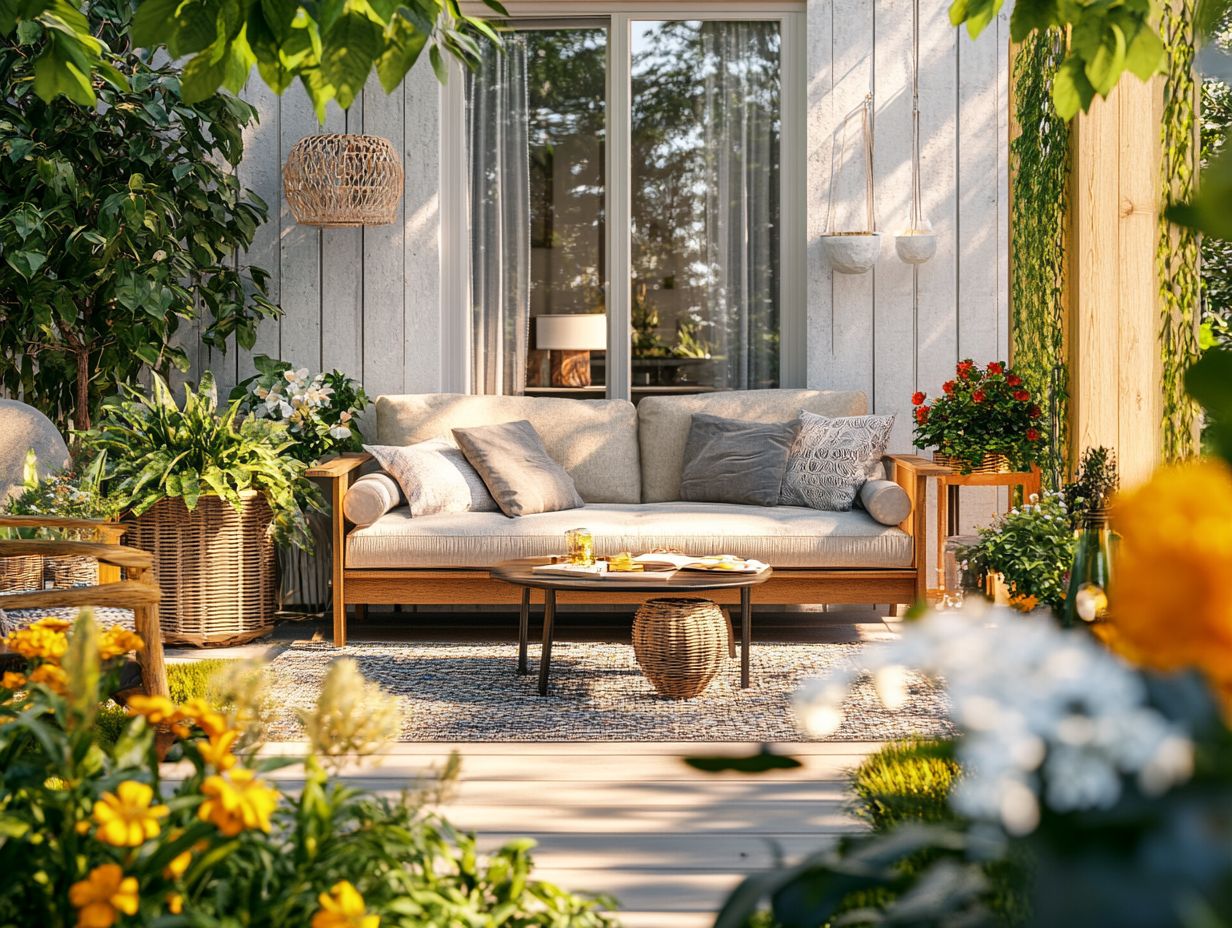
Creating a cohesive look in home staging involves bringing together indoor and outdoor styles to craft a unified aesthetic that captivates buyers. This approach elevates visual appeal and highlights the home s unique qualities.
To achieve this, consider implementing color coordination across both spaces. For instance, matching the hues of outdoor cushions with the interior upholstery can create a seamless transition that feels intentional.
Using consistent materials, like a similar wood finish for outdoor furniture that mirrors the indoor decor, strengthens the overall vibe and creates a harmonious flow.
Thematic decorations can serve as a bridge between indoor and outdoor areas. If your interior leans into nautical themes, include marine-inspired outdoor accents like seashell centerpieces or beach-colored lanterns.
By carefully selecting these elements, you can evoke a sense of continuity that resonates with potential buyers, showcasing both the charm and functionality of the property.
Common Staging Mistakes to Avoid
Avoiding common staging mistakes is essential for you as a seller. These missteps can diminish your home’s allure and hinder potential buyers from picturing themselves in the space.
Whether it s cluttered rooms or inadequate lighting, understanding what to avoid can dramatically enhance the effectiveness of your home staging efforts.
What Not to Do When Staging Your Home
When staging your home, avoiding certain pitfalls can significantly enhance the experience for potential buyers. Common mistakes include over-personalizing spaces, neglecting necessary repairs, and failing to maintain a clean environment.
Steering clear of these errors allows you to present your property in an inviting light that’s appealing to a wide array of tastes. For example, over-cluttering can overwhelm potential buyers and detract from the home s key features. Instead, minimize furniture and decor to foster a spacious ambiance.
The use of color plays a significant role in shaping perceptions. Opting for neutral palettes allows buyers to envision their personal style throughout the space. Don’t overlook outdoor areas; an inviting exterior can captivate buyers from the moment they arrive.
Simple landscaping updates and well-maintained patios can transform the entire property into an alluring sanctuary.
Frequently Asked Questions
What is the purpose of staging a home?
Staging your home is an exciting way to highlight its best features and attract potential buyers.
Is it important to stage both the inside and outside of a home?
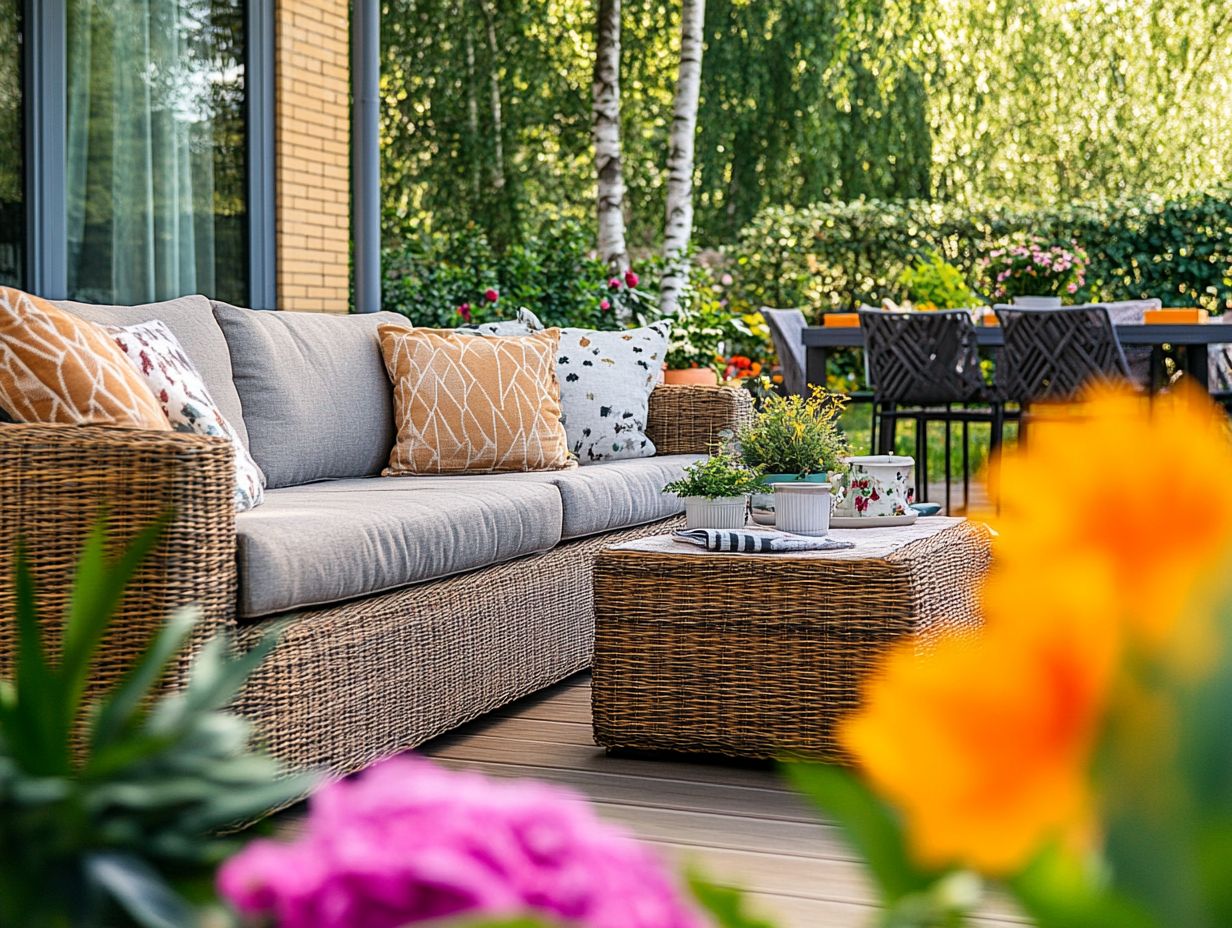
Yes, staging both the inside and outside of a home is crucial, as it creates a positive first impression for potential buyers. Consider exploring staging your home: tips for different styles to enhance your home’s appeal.
What are some tips for staging the inside of a home?
- Declutter and depersonalize spaces.
- Make necessary repairs.
- Create a warm atmosphere through lighting and furniture arrangement.
How can I stage the outside of my home?
To stage the outside of a home, start by giving the exterior a fresh coat of paint, adding potted plants and flowers, and ensuring the lawn is well-maintained. You can also refer to best practices for staging open houses to enhance curb appeal by cleaning driveways and walkways.
Do I need to hire a professional to stage my home?
While hiring a professional can be beneficial due to their expertise, you can also stage your home yourself with some research and effort.
When is the best time to stage a home?
The best time to stage a home is before it is listed for sale. This creates a great first impression and can attract more offers. However, if your home has been on the market for a while, staging can still refresh its appearance and attract new interest.
Ready to Stage Your Home?
Start staging your home now to attract buyers and showcase its best features!

